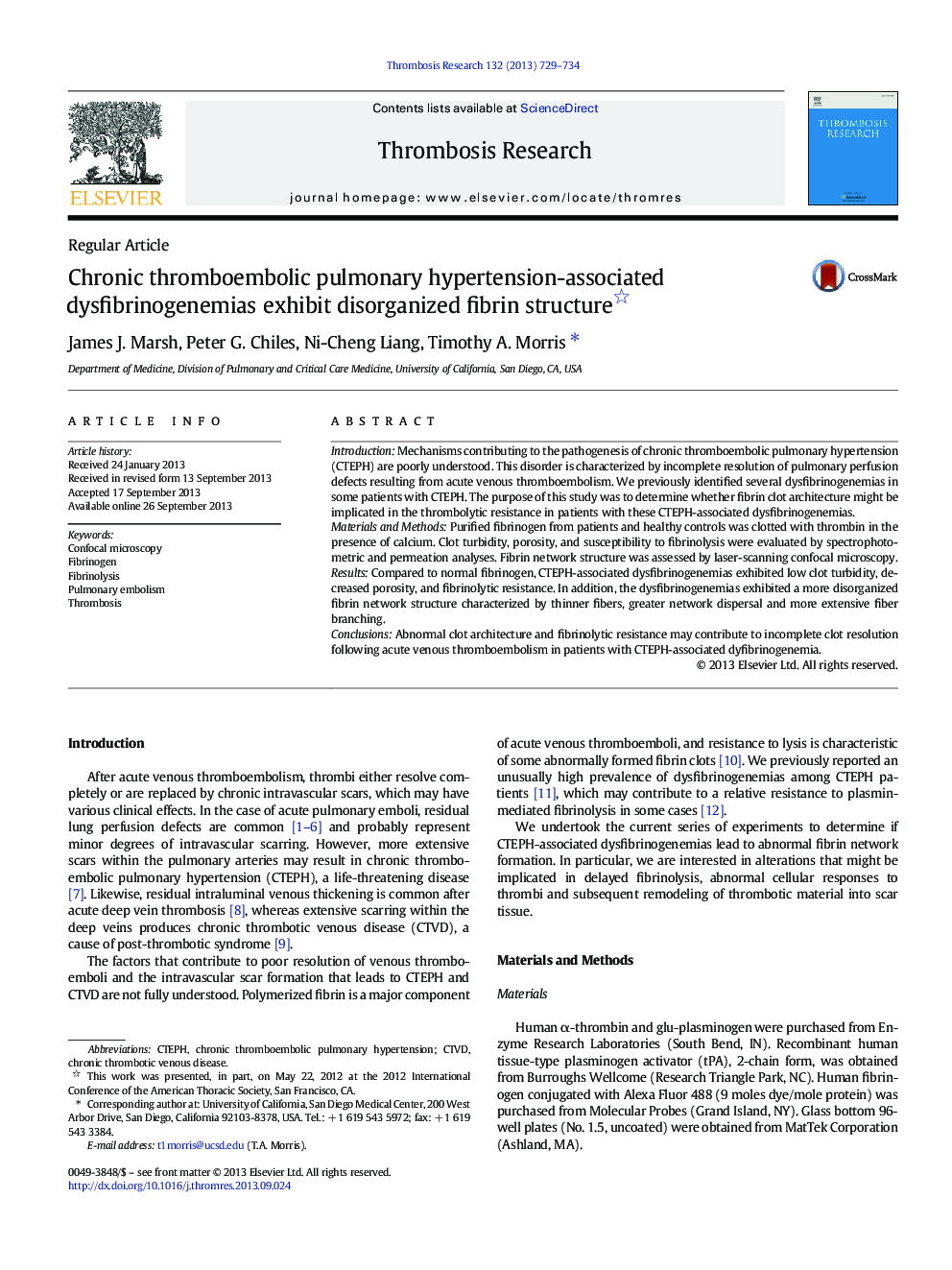| Article ID | Journal | Published Year | Pages | File Type |
|---|---|---|---|---|
| 6001929 | Thrombosis Research | 2013 | 6 Pages |
IntroductionMechanisms contributing to the pathogenesis of chronic thromboembolic pulmonary hypertension (CTEPH) are poorly understood. This disorder is characterized by incomplete resolution of pulmonary perfusion defects resulting from acute venous thromboembolism. We previously identified several dysfibrinogenemias in some patients with CTEPH. The purpose of this study was to determine whether fibrin clot architecture might be implicated in the thrombolytic resistance in patients with these CTEPH-associated dysfibrinogenemias.Materials and MethodsPurified fibrinogen from patients and healthy controls was clotted with thrombin in the presence of calcium. Clot turbidity, porosity, and susceptibility to fibrinolysis were evaluated by spectrophotometric and permeation analyses. Fibrin network structure was assessed by laser-scanning confocal microscopy.ResultsCompared to normal fibrinogen, CTEPH-associated dysfibrinogenemias exhibited low clot turbidity, decreased porosity, and fibrinolytic resistance. In addition, the dysfibrinogenemias exhibited a more disorganized fibrin network structure characterized by thinner fibers, greater network dispersal and more extensive fiber branching.ConclusionsAbnormal clot architecture and fibrinolytic resistance may contribute to incomplete clot resolution following acute venous thromboembolism in patients with CTEPH-associated dyfibrinogenemia.
